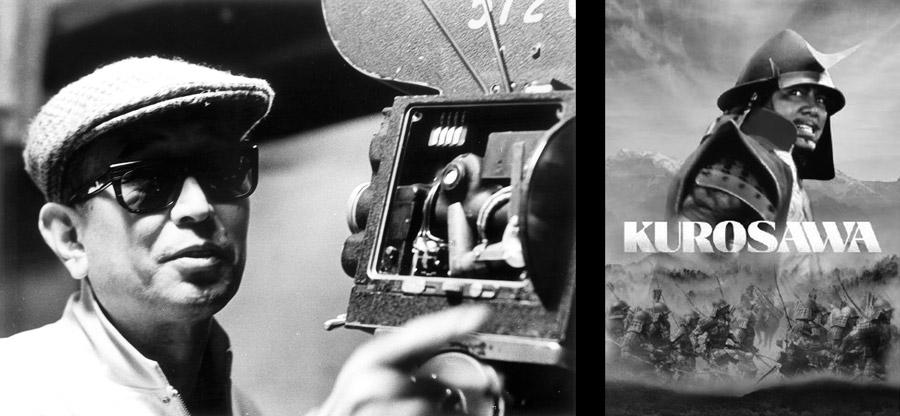Shunkinsho: Okoto to Sasuke (1935, Japan) directed by Yasujiro Shimazu is an adaptation of the classic novella, Shunkinsho or A Portrait of Shunkin, by novelist Junichiro Tanizaki (published in 1933) starring Kinuyo Tanaka. In the first of many adaptations, Shimazu’s scales back on Tanazaki’s taste for the perverse instead spinning a tale of tender yet obsessive love which finally finds its climax in the main characters’ shared suffering of self-imposed exile from the visible world.
Shunkinsho employs a confined, period-specific space with a haunting soundtrack of koto-shamisen music, bolstered by Tanaka’s magnetic performance, especially at the film’s palpably tense climax. Shimazu transforms the book’s masochistic romance into something more akin to a chaste melodrama which made Tanizaki himself critical of the film. Regardless of this it placed third in that year’s Kinema Junpo Top Ten (Kinema Junpo is Japan’s oldest film magazine and began publication in July 1919) cementing its place in film history.
Plot
Okoto (Kinuyo Tanaka) has been blind since she was nine. Though her parents dote on her, she has an imperious and determined manner. Fearing that Okoto will never find a suitable husband due to her disability, the family decide to let her study the koto and shamisen so that she may have some degree of accomplishment and support herself after her parent’s death. Sasuke (Kokichi Takada) is a young servant at the pharmacy run by Okoto’s father and often escorts Okoto to her classes for no special reason other than he is one of the few Okoto seems to tolerate.

Their relationship is an inversion of traditional customs – Okoto the mistress, Sasuke the servant; Okoto is cruel and Sasuke is kind; Okoto is strong while Sasuke is weak. She has all the power, and he has none (although he seemingly revels in the act of obeying each and every one of Okoto’s commands, rarely minding even when she is violent towards him). Nevertheless, despite her pride, Okoto is very dependent on Sasuke, both for the assistance he provides but also for his willingness to bend entirely to her authority.
As Okoto’s independence from her family grows she acquires a suitor, Ritaro, a playboy who fetishises Okoto’s blindness and sees her as a trophy, captivated by her beauty and spurred on by her haughtiness. When she violently rejects Ritaro’s advances, she is forced to deal with the heavy consequences of her actions, and his anger, when her face is maimed. This harrowing event forces her to realise the nature of her feelings for Sasuke, but she cannot bear for him to see her ruined face so he dutifully resolves to keep his eyes closed as if blind. The relationship between the pair is one of (seemingly) chaste sadomasochism in which both reject the ‘normal’ romantic affections of their time. Ultimately Sasuke decides to shift from his own world into that of Okoto, allowing them both to rejoice in a love born of darkness.
The Leading Lady

The years leading up to the second World War witnessed the rapid rise of Kinuyo Tanaka. She reached the esteemed position of Daikanbu (executive rank), the highest position an actress could attain, by the time she was 25, and normally appeared in at least ten productions per year, the majority of which she was the female lead.
The great actress gives one of her most assertive performances in the role of an increasingly conflicted blind musician, Otoko, a performance widely considered a high point of her career. Haunting and restrained, she is able to hold vulnerability at bay with delicate sensuality. Her and co-star Takada are also able to convey an electric physicality while barely touching, a truly remarkable achievement, especially in comparison to modern films and the way that initiate relationships are now explicitly portrayed.
If, like me, you find the source material and context of a film adaptation as interesting as the actual film then you will find that there are numerous lenses from which this film can be analysed and many interesting themes to be explored. Is this a film about a servant’s allegiance to the Master or perhaps about an entitled wealthy harpy’s preoccupation with herself? Maybe it’s about a musician’s sacrifice for artistic emancipation.
Extrapolating out from Shunkinsho, some have said that it shows traditionalism’s last gasp in Kyoto during the Meiji era’s modernization and Westernization. It can also be seen as a comment on the fragility and corrosion of Japan’s social system as a result of feudal politics, codes and caste rigidity. Cynically others have commented that it demonstrates the unpredictability of Japan’s morality as personified by a man forcing himself upon the defenceless to gratify his desires (a comment on the then contemporary issue of Japan’s invasion of Manchuria).
To me the film is a commentary on the way in which the poor accept their lack of power or place in society as a whole, no matter the advancing freedoms of a new era, as well as a critique of honour and obedience. It is also an exposé of female empowerment in Japan (unsurprising since Western literary critique has likened this work as a Tanizaki reading of Virginia Woolf). It is both a remarkable drama and a fascinating exploration of the new territory opened up to Japanese cinema by the coming of ‘talking pictures’. Shimazu’s largely understated directorial style is intriguingly at odds with the erotic and dark premise of the film which aims to explore the baser elements of the human heart.














































